The great American painter Wayne Thiebaud holds a special place in my heart. As quivering first-year art students, it was the work of Wayne Thiebaud to which we were directed in order to learn about colour. In an onerous exercise that involved painting liquorice allsorts, we failed miserably.
We laboured away at our dull and murky canvases to the infamous frustration of our lecturer, who at one memorably heated moment of despair yelled, “Do I need to WIPE YOUR ARSES for you?” while slamming down a tub of acrylic paint – an action that induced a large dollop of yellow to leap out the tub and, in the breathless silence that followed, slide primly down the sleeve of her leather jacket. This moment is forever linked in my mind to the grave importance and mischievous nature of colour, and the work of Wayne Thiebaud.
In the years since I’ve spent many hours poring over this artist, who is most renowned for his extraordinary paintings of very ordinary things: cakes, ice creams, hot dogs, highways. His paintings sing with colour: the wan pastels of nostalgia are shot through with bright oranges, greens, and reds, and each object casts a miraculous signature blue shadow – a lesson in light that not even the shimmering Impressionists can hold a candle to. Each slice of pie or ice-cream sundae rests in a suspended twilight on an infinite cream counter, while colours fizz and pop in almost imperceptible little bursts around them.
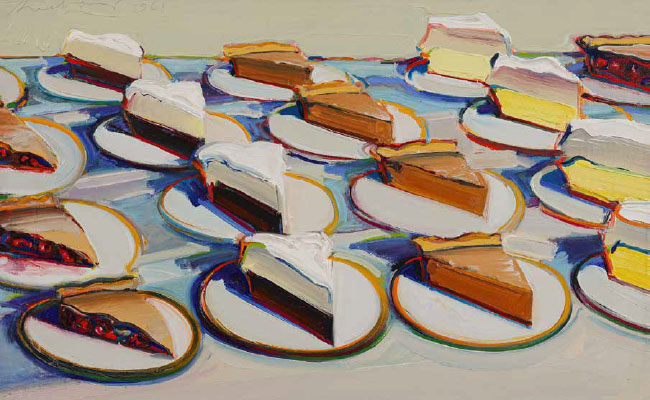
Wayne Thiebaud: American Still Life has just opened at the Courtauld in London. Thiebaud (who died in 2021 at the age of 101 and continued up to the last to paint and exhibit) was initially lumped in with the Pop artists in the 1960s, although he surpassed and outlived them. His critique of the postwar consumerist culture of the 1950s was more complex and tender; it was laced with genuine nostalgia for the boardwalks and deli counters and diners of his youth.
More than that, he had an authentic commitment to the substance of painting itself, so his was not the slick comic-book reproduction of his Pop Art peers. In his work, paint is applied like frosting on a cake in thick, buttery strokes. He once said he didn’t know what it meant to be an artist, but to be a painter – well, that was something you had to prove.
Thiebaud didn’t just paint, he also made startling black and white prints and drawings. He is a master of not just colour, but composition too. When I teach classes about narrative and composition I compare two of Thiebaud’s prints to two of the 15th-century master printer Albrecht Dürer’s to show how the same dynamics are at work. The driving force of Dürer’s four horsemen of the apocalypse is reflected in Thiebaud’s relentless row of high-contrast cake slices; the contained intimacy of mourners surrounding Christ after the crucifixion twins with a single spoon on an empty dish in late-afternoon shadow.
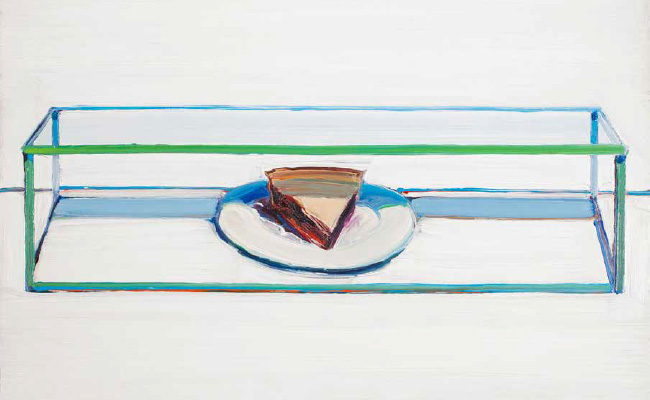
Thiebaud is celebrated because of how profound he could make the ordinary objects of our existence. Through colour and paint and composition, yes, but also with a quiet depth of feeling that makes his rows of lollipops and ice-cream cones quite transcendent. In this he is an heir of Morandi, the Italian artist who devoted all his life to painting and drawing nothing but immaculately arranged still lives of jars and vases.
Unlike Morandi though, Thiebaud didn’t paint from life but from memory: his food is the Platonic ideal of food, the very idea of a cream-puff embodied. A cream-puff embodied and then infused with light and longing.
To celebrate the opening of the exhibition, the Courtauld asked premier baker Lily Jones, founder of Lily Vanilli Bakery, to recreate the cakes in one of Thiebaud’s paintings. She did a masterful job with all 13 of them, from the texture of frosting to the cherries on top. The philosopher Plato, already suspicious of the empty illusions of art, might have been horrified at this turn of events, mimicry of mimicry. Though to me, nothing seemed to make the case more for the value of art than looking at those cakes-in-the-flesh. Admittedly I was viewing from a screen, but the more I squinted at them, the more underwhelmed I was. Gone were the vivid blue shadows and the jewel-like lines. Displayed flatly on a table in the centre of the room, gone was the drama of composition. In Thiebaud’s painting the cakes, balanced precariously on thin rods, are arranged in three rows that disappear, slightly ominously, out of frame. The cakes on the table told no story. They were like sad cake puppets with no-one to bring them to life.
Don’t get me wrong, the cakes were a delightfully perfect mirror of the ones in the painting behind them; Lily Jones is an artisan in her own right and among her many accolades and achievements, her clients include 10 Downing Street, Alexander McQueen, Veuve Cliquot and Elton John. The Courtauld’s gesture would have been better served by inviting the baker to bring in her own confections – colourful, maximalist, nostalgic creations in the same vein as Thiebaud himself. From this side of the screen the replicas seemed like an Instagram hit, but a missed opportunity. They were also an object lesson in the elusive ingredient that makes a true viewing experience so sustaining and delicious; art is simply more than the sum of its parts.
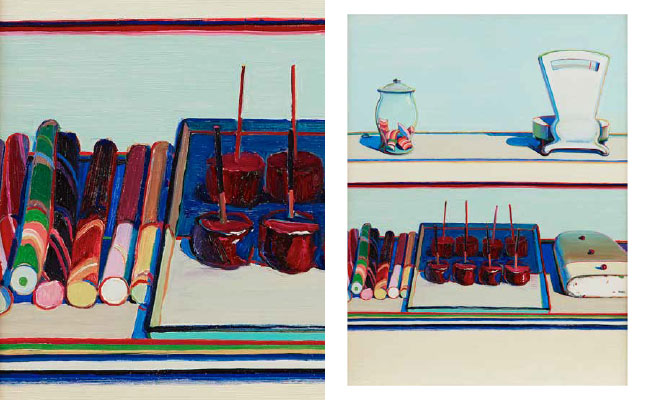
If you’re in London over the next two months, go and feast your eyes on this treat of a show. And as we head into a season of actual feasting, laced with equal parts nostalgia and dread, look afresh at the foodstuffs on your table. The fact that food can be so freighted with memories, values and symbolism seems worthy of our attention. It’s a distinctly human quality that a brandy butter can be haunted by both despair and delight.
Wayne Thiebaud: American Still Life is on display at The Courtauld Gallery in London until January 18 2026.
Top image: Wayne Thiebaud, Cakes, 1963. Picture: © Wayne Thiebaud VAGA at ARS, NY and DACS, London 2025. Image Courtesy National Gallery of Art, Washington.
Sign up to Currency’s weekly newsletters to receive your own bulletin of weekday news and weekend treats. Register here.







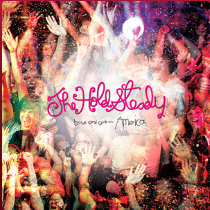
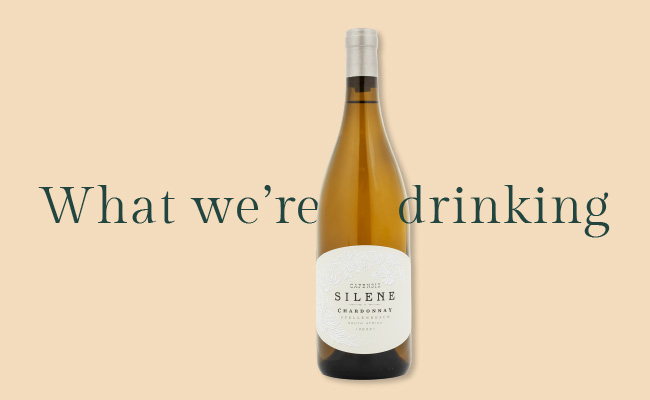



So true that brandy butter can be the site of despair and delight. I would add disdain to that, because nobody likes their nostalgia messed with. Having read your tribute above, I instinctively feel that Thiebaud would have agreed that nostalgia refutes neutrality, and holds surprisingly strong opinions. PS I have the best recipe